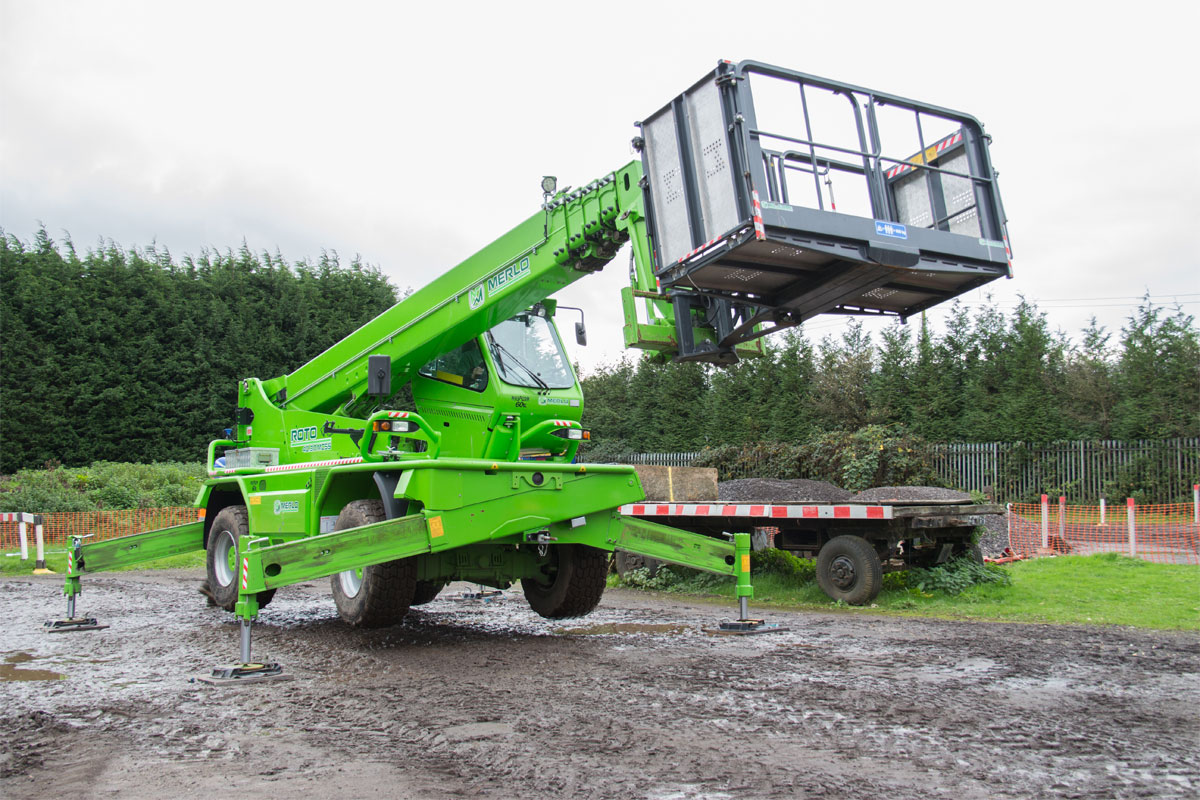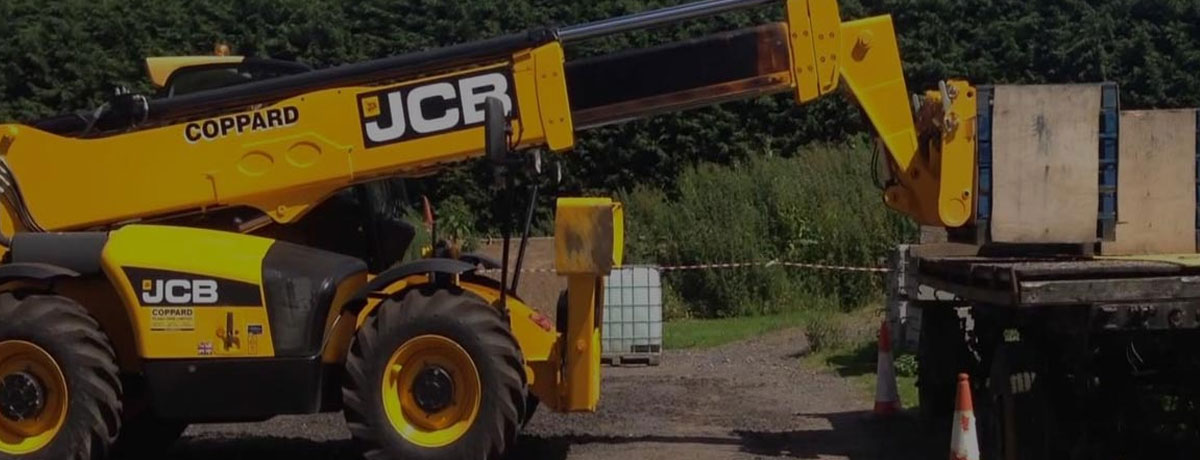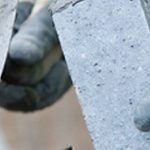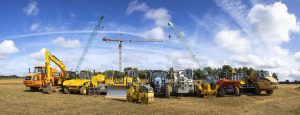In a bulletin released on 13th February 2018, CPCS stated that ‘a review was undertaken on the category due to the nature in which slew types have evolved since the Telescopic Handler category was first introduced many years ago.
As a result of a review of the endorsement for Telescopic Handler All Sizes inc 360 slew (A17D), CPCS are pleased to announce a new stand-a-lone category of Telescopic Handler 360º Slew (A77), which is now incorporated within the Scheme and will be available from 28 March 2018.
The review was undertaken due to the nature in which the slew types have evolved since the Telescopic Handler category was first introduced many years ago and, then was predominately only used for fork use as with traditional telescopic handlers but are now increasingly being used as ‘a crane’ with a drum hoist and rope.
This category will supersede Telescopic Handler – All Sizes inc 360º Slew (A17D) which will be retired from the scheme.

What Does This Mean For Existing Card Holders
(Operator and Tester)
Those who gained A17 D prior to the introduction of A77 (28/03/18) have the following transitional options available:
If you do not hold the A17D category on your ticket, you’ll be required to complete the new A77 Telescopic Handler 360 Slew category. This includes an extended theory test which will consist of 101 theory questions and this also includes 2 mandatory question related to 3 duties charts, then a 3 hour practical test which will cover fork-mounted loads, free-on-wheels, pick-and-carry duties, and fixed-hook / hoist-rope suspended loads. On achievement of A77 you will also be automatically awarded A17C and A17E.
If you hold the A17D category on your ticket, you’ll be required to undertake the Transitional Assessment for A77 (A89) to be awarded the A77, A17C (non-slew) and A17E (suspended loads) at the point of renewal. Those who do not undertake the A77 (A89) Transitional Assessment at the point of renewal or upgrade will only be awarded the A17C (non-slew) category.
New Card Holders achieving A77
On achievement of A77 all cardholders will also be automatically awarded A17C & E
Learning Outcomes
What will get covered
| Learning Outcome | Training Content | |
| Describe the nature of the sector of industry and their role and responsibilities as a plant operator | • Industry type • Customer / client needs • Sector contribution • Role • Reporting structures • Lifelong skills • Working practices |
• Communication with colleagues / management / other trades • Health and Safety at Work Act • Environmental issues • Other trades • Social responsibilities |
| Name and explain the purpose of principal components, the basic construction, controls and terminology | • Differing types • Functions and applications • Power units • Hydraulic systems • ROPS / FOPS • Chassis / steering / tyres Inc. pressures / ply rating and importance of replacement with same |
• Stability • Booms • Forks • Safety / stability systems • Counterbalancing • Attachments and accessories • Hoist ropes / hook blocks • Access systems • Safe load indicator equipment • Remote control units |
| Conform with manufacturer’s requirements as per the operator’s handbook, other types of information sources and relevant regulations and legislation | • Operator’s Manual • Machine decals • Health and Safety at Work Act • PUWER/LOLER • PPE • Rating plates • Codes of Practice • Site plans / drawings • Duty charts/Load charts • Familiarisation |
• Method statements • Lift plans • Lifting requirements and limitations • Risk assessments / COSHH • Inspection and reporting requirements, daily weekly thorough examination, both for equipment and accessories |
| Undertake and record all pre-use checks | • Regular and non-scheduled maintenance procedures • Checklists |
• Sequence of pre-use checks • Defect reporting • Company polic |
| Explain the need and function of appropriate documentation | • Certification (CE for machine & attachments) • Thorough examination (machine and accessories) |
• Relevant site-related documentation • Pre-use checks/inspections • Operator’s handbook |
| Configure and ready for travel (site and highway) | • Driving controls • Attachments • Driving position • Type and security of attachments |
• Visibility • Road Traffic Act (attachments etc.) • Site (towing) |
| Travel over level surfaces and on rough, undulating ground and inclines, with and without loads | • Driving controls • Ground conditions • Traction / aids • Inclines and techniques • Hazards • Travel speeds • Load swing and impact on equipment |
• Working area / routes • Site and road travel • Environment protection / minimise damage • Load protection • Stability/centres of gravity • Locking axles |
| Manoeuvre in areas with limited space, with and without loads | • Visibility • Limitations of vision • Steering options • Proximity hazards |
• Protection of ground / tight turns • Environmental / noise / fumes • Travel speeds |
| Arrange and follow given signals and instructions when travelling and manoeuvring with and without loads | • Code of signals (hand) • Signaller location • Visibility • Signalling methods • Types of hand signals • Hand signal compatibility • Verbal instructions |
• Codes of practice • Communication types and limitations • Radio set-up • Radio protocols • Visibility • Multiple signalling |
| Configure and set for all lifting, loading and transferring duties | • Best method for safe load movement • Lift plan • RAMS • Positioning / planning • Required configuration • Lifting controls • Machine capacity • De-rating • Load Moment Indicators • Load charts • Attachments |
• Load centres / C of G • Environmental conditions • Levelling • Site markings • Fork spacing • Hazards • Load weights • Deploy stabilisers • Rated capacity indicators • Levelling devices (axles) • Ground conditions |
| Attach and remove various attachments | • Attachment types and function • Preparation procedures • Attaching and removal procedures • Storage requirements • Machine configuration and positioning |
• Manual handling • Using assistance • Securing requirements and essential pre-use checks • Post-fitting checks • Load charts |
| Attach and remove hoist-rope attachments for the movement of suspended loads | • Attachment types and function • Preparation procedures • Attaching and removal procedures • Storage requirements • Machine configuration and positioning |
• Manual handling • Using assistance • Securing requirements and essential pre-use checks • Post-fitting checks • Load charts |
| Explain actions required for proximity hazards Inc. underground and overhead services | • Types of typical services • Warning / identification systems |
• Reporting procedures for damage to services • Minimum distances and clearance |
| Explain the basic principles of the slinging of loads, types of lifting accessories that can be used and the correct and incorrect methods for attaching suspended loads to the machine | • Signalling procedures • Techniques • Types of loads • Machine stability • Effects of incorrect methods of attachments • Function • Application • De-rating |
• Load stability / security • Environmental conditions • Load characteristics (loose/bundled/fluid etc.) • Accessory compatibility • Slinging angles • Load weight • SWL/WLL • Limitation of slinging duties |
| Explain the requirements for ensuring adequate ground support and stability | • Tyre pressures • Ground conditions/assessments • Lift plans • Point loadings • Machine bearing pressures/point loadings • Ground bearing capacity • Factors of safety • Environmental effects Inc. severe weather • Sole plate material/ composition |
• Spreading of load/sole plates • Ground improvement • stabiliser extension/short rigging • Application of full or some stabiliser use • Underground services • Ground structure and composition • Terrain/topography • Previous use of ground • Temporary works |
| Explain the causes of instability during blocked, free-on-wheel and pick-and carry duties | • Effects of swinging loads • Dynamic forces • De-rating of slung loads • Load size • Ground conditions |
• Factor of safety • Travel configuration • Proximity hazards • Regulations/guidance • Environmental conditions |
| Lift and place various suspended and fork-mounted loads from a variety of locations including a vehicle | • Best method for safe load movement • Lift plans • Required authority • Guidance and regulations • Load charts • Environmental conditions • Machine suitability • Preparation • Loading towers / platforms / racking / stacking • Undercutting |
• Load types • Attachments/accessories Inc. limitations and design use • Working area • Identification of proximity hazards • RCI/LMI settings • Types of trailer / transporter • Transporter capacities • Procedures / weight distribution • Materials / vehicle protection |
| Lift and place suspended and fork-mounted loads under blocked, free-on-wheels and pick-and-carry duties | • Load charts • Stability • Trial lifts • Ground conditions • Lifting controls • RCI/LMI information • Jib extensions |
• Visibility • Environmental conditions • Load stability/security • De-rating requirements • Following instructions • Travel routes |
| Lift, transfer and place fixed- hook suspended loads up to maximum extension, at full of working height and using the full slewing capability of the machine | • Configuration • Ground conditions / hazards • Visibility • Load security / travel position • Signalling / following instructions |
• Stability • Loading towers / platforms / racking / stacking • Protection of structures / loads • Overhead obstructions • Lift plans |
| Lift, transfer and place hoist- rope suspended loads up to maximum extension, at full working height and using the full slewing capability of the machine (Blocked duties) | • Configuration • Ground conditions / hazards • Visibility • Load security / travel position • Signalling / following instructions • Stabilisers |
• Stability • Loading towers / platforms / racking / stacking • Protection of structures / loads • Overhead obstructions • Lift plans |
| Lift, transfer and place fork- mounted loads up to maximum extension, at full working height and using the full slewing capability of the machine (Free-on-wheels) | • Configuration • Ground conditions / hazards • Visibility • Load security / travel position • Signalling / following instructions • Lift plans |
• Stability • Loading towers / platforms / racking / stacking • Protection of structures / loads • Overhead obstructions |
| Minimise the swinging of suspended loads during travel | • Travel routes • Accessory types • Poor/uneven ground • Slopes/inclines • Effects of swinging loads • Hand & tag lines |
• Travel speeds • Stability • Observation/anticipation • Load characteristics |
| Explain how stability is affected by travelling with a raised / extended boom and/or rotated upper structure with suspended loads and fork-mounted loads (both regular and irregular) | • Centres of gravity • Swinging of loads • Environmental factors/extreme weather • Dynamic forces |
• Ground conditions • Slopes/inclines • Travel speeds • Travel routes |
| Explain visibility issues and restrictions with suspended and fork-mounted loads | • Load size • Load swing • Carrying height of load • Maintaining vision with slinger/signallers |
• Direction of travel • Assistance for travelling • Typical proximity hazards • Ground conditions |
| Place suspended loads out of sight of the operator | • Communication/signalling • Signaller positioning |
• Stability • Proximity hazards |
| Maintain safe working situations | • Stability • Load security |
• Hazards |
| Maintain safe and tidy working areas | • Specification • Stacking |
• Load positioning / storage • Proximity hazards |
| Carry out shut down and securing procedures | • Shut down procedures • Security • Configuration |
• Parking and positioning • Isolation of remote units • Reporting of defects |
| Explain the loading and unloading procedures for machine transporting | • Compatibility • Positioning • Ground conditions • Access / egress / working at height |
• Types of transporter • Security • Configuration • Loading responsibility |
Category Information
CPCS defines a category as an item of plant or equipment used within the construction or allied industries and worked in accordance with the manufacturer’s basic design. Although this category can have varying uses within industry and used with many attachments, for CPCS training and assessment standards, the descriptions reflect basic core use.
To identify a machine within this category, a typical 360 degree slew telescopic handler would normally have the listed features and be used within the described characteristics.
Category Features
- Multi axled wheeled chassis containing a side- mounted operating position; power, hydraulic and electrical units, counterweight components, and front and rear stabilisers
- Upper structure containing the cab and boom components, able to be slewed through 360 degrees
- Extending multi-sectioned boom with a tilting carriage allowing attachments to be fitted, all hydraulically operated
Category Characteristics
- Able to travel in forward and reverse and change direction during travel with most types having all-wheel steering and drive
- Most types can travel on uneven and loose ground and slopes
- Can carry out lifting, transfer and placing duties with loads mounted on forks, from ground level to maximum operating height and reach by raising and extending the boom
- Can carry out lifting, transfer and placing duties with loads suspended from the carriage and jib extension via a fixed hook, and connected to the machine using a lifting accessory
- Can carry out lifting, transfer and placing duties with loads connected to a hook block and suspended from the carriage and jib extension via a power-driven hoisting rope
*** It is important to note that we expect the price for training and testing for the new A77 category to increase in comparison to the current A17D category.








